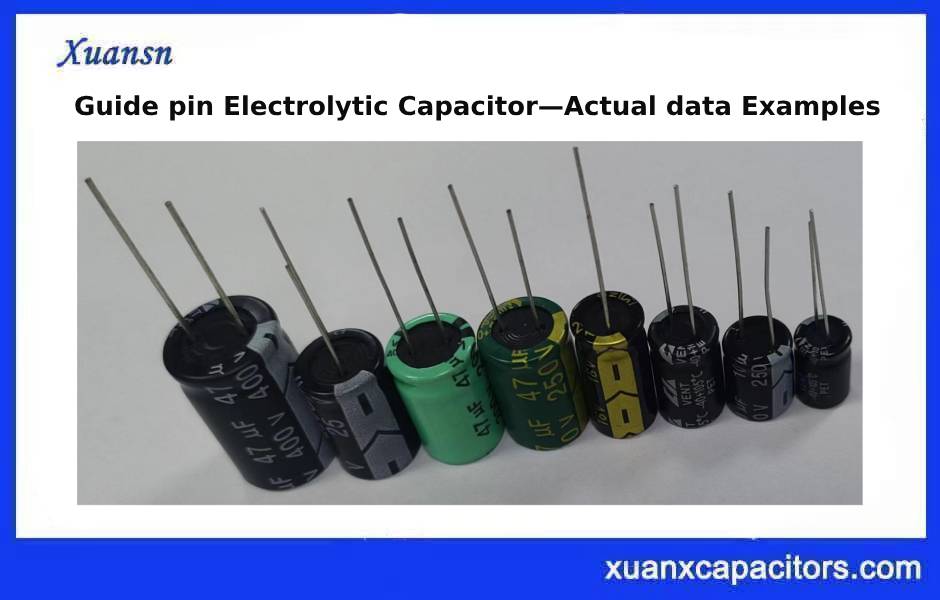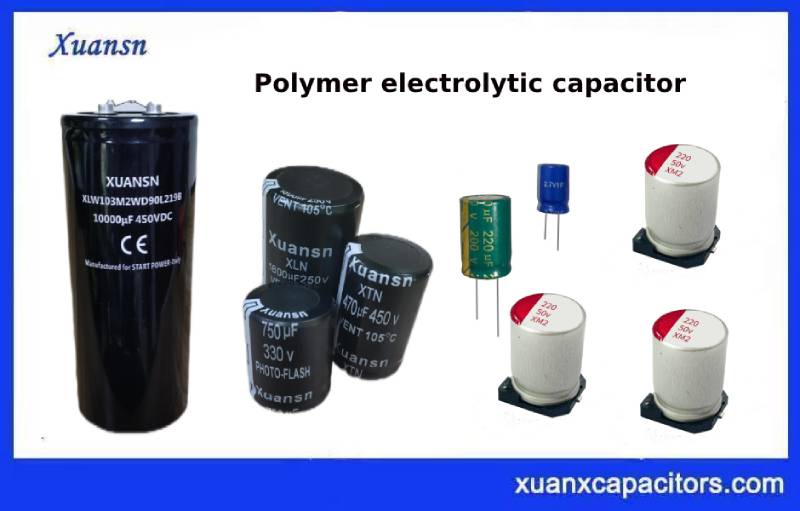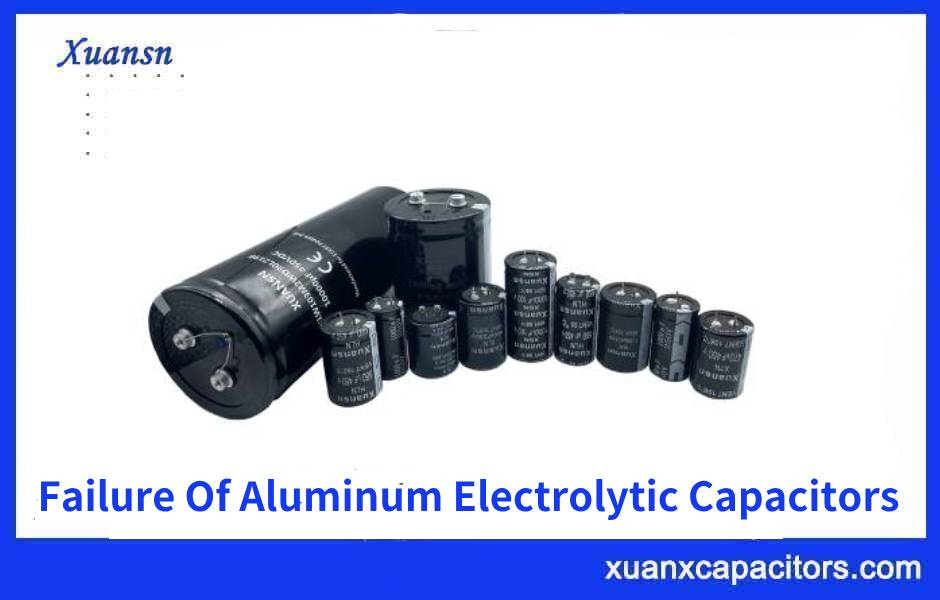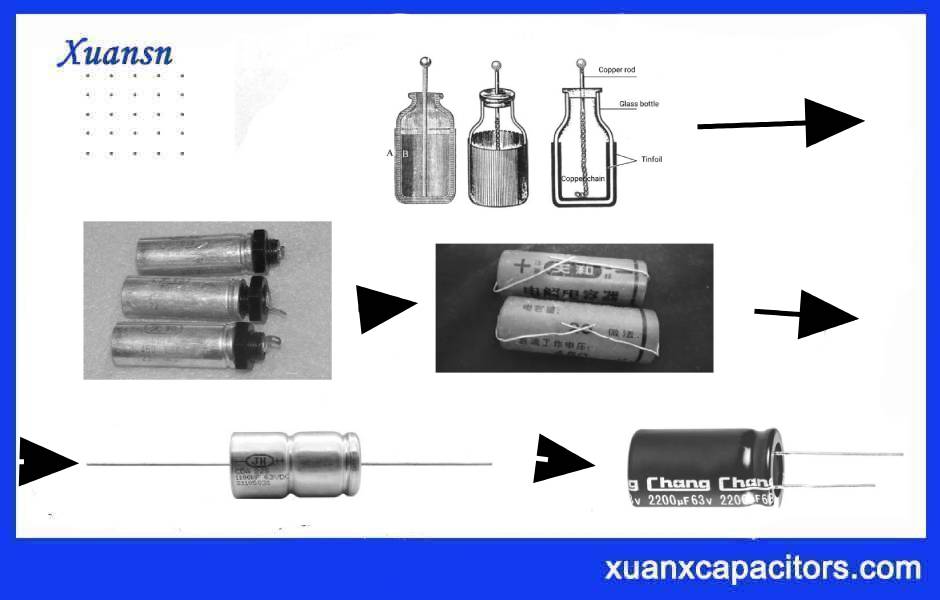Current status and development of aluminum electrolytic capacitors
1 Structure and performance characteristics of aluminum electrolytic capacitors Aluminum electrolytic capacitors are made of anode aluminum foil that has been corroded and formed with an oxide film, cathode aluminum foil that has been corroded, and the middle is wound with electrolytic paper, and then immersed in working electrolyte, and then sealed in the aluminum shell Made in China. Its performance characteristics are as follows.
1.1 The electric capacity per unit volume is very large
The capacitance of the capacitor C=ε0εrS/d, where ε0 is the vacuum permittivity (constant), εr is the relative permittivity of the dielectric material, S is the effective area of the electrode, and d is the thickness of the dielectric material. For aluminum electrolytic capacitors, εr=8~10. The surface area of anode aluminum foil and cathode aluminum foil can be increased by tens to hundreds of times through corrosion. d=αVf,α≈1.4nm/V, Vf=10V~600V, then d is about 0.014μm~0.9μm, which is several to several hundred times smaller than other capacitors. Therefore, the capacitance per unit volume of electrolytic capacitors is several to several tens of times larger than other capacitors.
1.2 Very large rated capacity Since the electrolytic capacitor adopts a winding structure, it is easy to expand the volume, so it can easily achieve a rated capacity of tens of thousands of microfarads or even hundreds of thousands of microfarads.
1.3 Has a self-healing effect. Because there is electrolyte inside the capacitor, during work, once the dielectric on the anode aluminum foil of the capacitor is locally damaged, the O2- or OH- or acid radical ions in the electrolyte will quickly reach under the action of the electric field force. The damaged position is blocked, and the damaged oxide film is repaired to restore the capacitor to its normal state.
1.4 Price advantage Because the main raw materials used in the manufacture of aluminum electrolytic capacitors are common industrial materials, the equipment used is general industrial equipment, and the degree of automation is relatively high, so the manufacturing cost is relatively low, especially the manufacturing cost per unit capacity is higher than other types. Capacitors have an overwhelming advantage.
2 The disadvantages of aluminum electrolytic capacitors
2.1 Possibility of polarity and leakage due to the polarity of electrolytic capacitors, you must pay attention to the correct connection of the positive and negative poles when using, otherwise not only the capacitor will not work, but also the leakage current is very large. It will generate heat, destroy the oxide film, and then damage it. Aluminum electrolytic capacitors are sealed with aluminum shells and rubber plugs. When the working electrolyte is heated and vaporized, it will easily leak from the root of the lead. After a long-term operation of the capacitor, the electrolyte will dry up and the capacitor will fail. This is one of the main failure modes of aluminum electrolytic capacitors.
2.2 The loss tangent value is large, the temperature and frequency characteristics are relatively poor. The working electrolyte acts as a cathode in the aluminum electrolytic capacitor. Because the working electrolyte is an ionic conductor, the movement speed of ions is much slower than that of electrons. , Resulting in the conductivity of the working electrolyte being lower than that of the electronic conductor. After immersing the electrolytic paper, the conductivity further decreases. Therefore, the equivalent series resistance caused by the working electrolyte is larger than the equivalent series resistance caused by the metal electrodes of other capacitors, resulting in a larger loss tangent value of the aluminum electrolytic capacitor , And the frequency characteristics are relatively poor. In addition, since the conductivity of liquid materials is greatly affected by temperature, the temperature characteristics of aluminum electrolytic capacitors are relatively poor.
3 The vitality of aluminum electrolytic capacitors With the development of science and technology, especially the development of integrated circuits (IC) and very large-scale integrated circuits (VLSI), people doubt whether the entire capacitor industry can continue to develop, and even whether there is room for survival. However, since 1987, the global production of capacitors has grown at a rate of more than 20% per year, making this suspicion self-defeating. Practice has proved that aluminum electrolytic capacitors have extremely strong vitality.
3.1 The development of IC cannot replace aluminum electrolytic capacitors. On the one hand, due to the emergence of IC, some small-capacity capacitors are integrated into the circuit; on the other hand, the development of IC has greatly increased the operating frequency of the circuit system, resulting in some aluminum electrolytic capacitors. The circuit is replaced by other capacitors. However, the power supply part of the IC circuit is always inseparable from the electrolytic capacitor. In addition, the improvement of the performance of aluminum electrolytic capacitors has also expanded to other capacitor applications.
3.2 The changes in the overall circuit only changed the aluminum electrolytic capacitor model. The volume of the switching power supply continues to shrink and the energy conversion efficiency continues to increase, making the switching power supply’s operating frequency continue to increase (from 20kHz to 500kHz, or even above 1MHz), resulting in its output Part of the high-frequency noise increases, in order to effectively filter, must use ultra-low high-frequency impedance or low equivalent series resistance (ESR) capacitors.
4 A rare opportunity for aluminum electrolytic capacitors
The advent of the information age and the emergence of the knowledge economy have not only brought good news to the global economy, but also brought unprecedented prosperity to the electronics industry. Similarly, aluminum electrolytic capacitors have also achieved unprecedented development.




